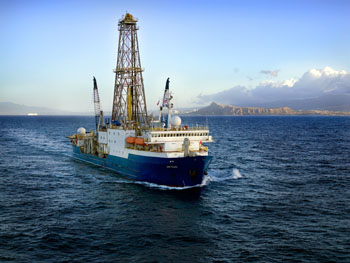Campus News
CO2 at work during last global ‘hot spell’ but hardly alone
UC Santa Cruz ocean sciences professor Christina Ravelo is part of an international team that is using ocean floor sediment samples to compile data on past periods of global warming in order to understand today’s climate changes.


UC Santa Cruz ocean sciences professor Christina Ravelo is part of an international team that is using ocean floor sediment samples to compile data on past periods of global warming in order to understand today’s climate changes.
In a study published this week in the journal Nature, Ravelo and co-authors report that temperature patterns during Earth’s last prolonged global “hot spell”–the Pliocene, some 5.3 to 2.6 million years ago–differed dramatically from those of modern times.
The researchers compiled records of sea surface temperatures going back five million years, to the early Pliocene. The records reveal a world with fairly uniform warm temperatures in the whole of the Tropics prior to 4 million years ago — a significant scenario that typical climate model simulations fail to show.
“If we want to understand our future climate, we have to be able to understand the climate of the past,” said lead author Alexey Fedorov from Yale University.
The researchers say other factors must be considered besides a build-up of carbon dioxide in the atmosphere. Their findings are based on an analysis of ocean floor sediments collected by drilling into the ocean floor.
Other authors include Zhonghui Liu of the University of Hong Kong, Petra Dekens of San Francisco State University, Chris Brierley of the University College London, and Kira Lawrence of Lafayette College.
The research was supported by the National Science Foundation U.S. Department of Energy, the David and Lucile Packard Foundation, and Yale University.